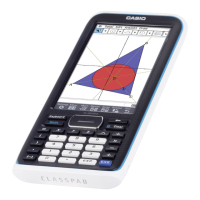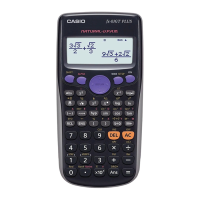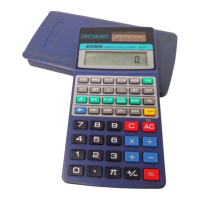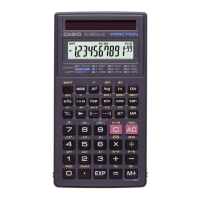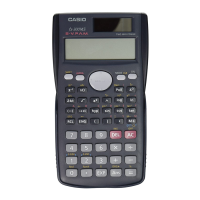2-18
k Random Number Generation (RAND)
u Random Number Generation (0 to 1) (Ran#, RanList#)
Ran# and RanList# generate 10 digit random numbers randomly or sequentially from 0 to 1.
Ran# returns a single random number, while RanList# returns multiple random numbers in list
form. The following shows the syntaxes of Ran# and RanList#.
Ran# [
a] 1 < a < 9
RanList# (
n [,a]) 1 < n < 999
•
n is the number of trials. RanList# generates the number of random numbers that
corresponds to n and displays them on the ListAns screen. A value must be input for n.
• “
a” is the randomization sequence. Random numbers are returned if nothing is input for “a”.
Entering an integer of 1 through 9 for a will return the corresponding sequential random
number.
• Executing the function Ran# 0 initializes the sequences of both Ran# and RanList#. The
sequence also is initialized when a sequential random number is generated with a different
sequence of the previous execution using Ran# or RanList#, or when generating a random
number.
Ran# Examples
Example Operation
Ran#
(Generates a random number.)
K6(g)3(PROB)4(RAND)
1(Ran#)w
(Each press of w generates a new random
number.)
w
w
Ran# 1
(Generates the first random number in
sequence 1.)
(Generates the second random number in
sequence 1.)
K6(g)3(PROB)4(RAND)
1(Ran#)1w
w
Ran# 0
(Initializes the sequence.)
Ran# 1
(Generates the first random number in
sequence 1.)
1(Ran#)0w
1(Ran#)1w

